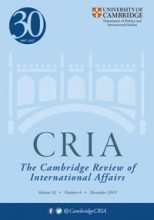This article explores how propaganda can be used to construct counter-factual visual narratives at times of war. Specifically, it examines how the Islamic State communicated its way through the 100-day-long battle for east Mosul, which was launched by the coalition and its allies in October 2016. Drawing on Jacques Ellul’s 1962 theory of propaganda, it uses qualitative content analysis to decipher the 1,261 media products published online by the group during the first phase of its defence of the city. The author contends that, even though it was resoundingly defeated there by January, the global legacy of this battle, which was used as a testing ground for a series of potent innovations in insurgent strategic communication, will endure long into the future.
